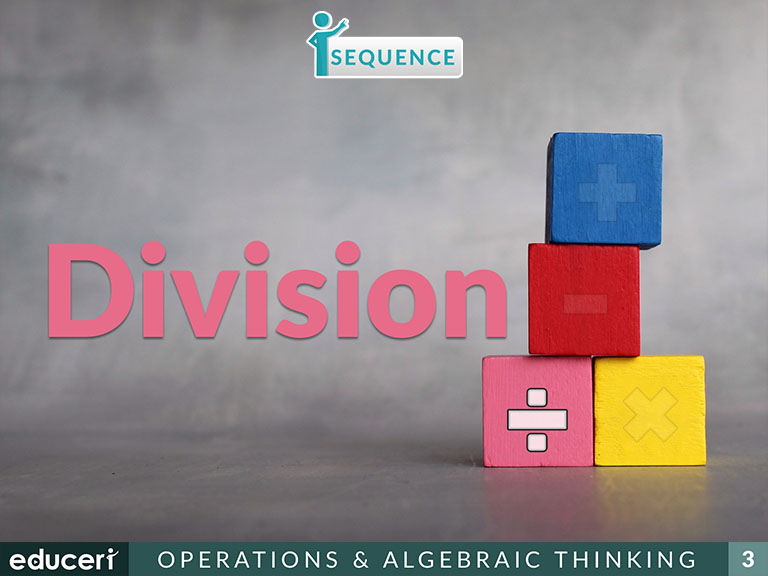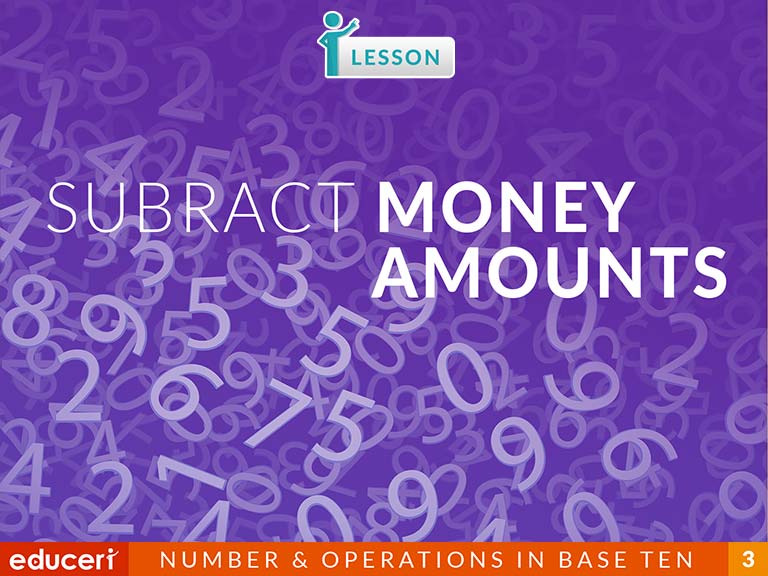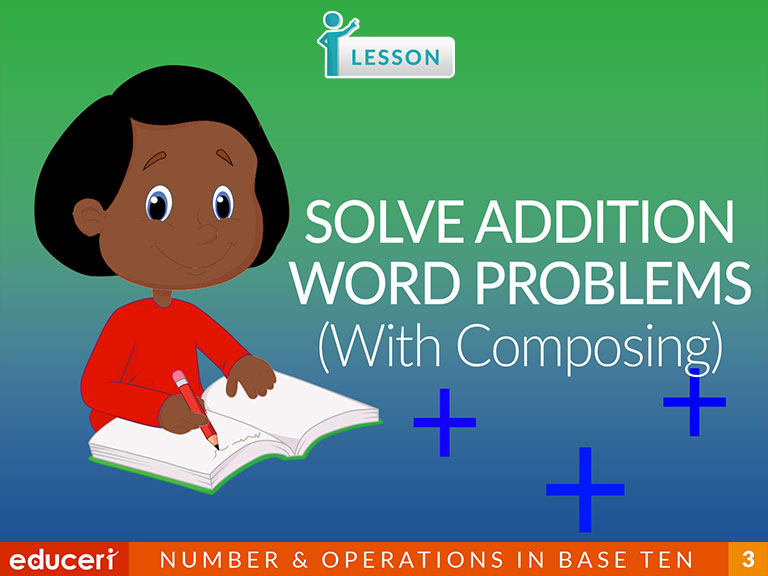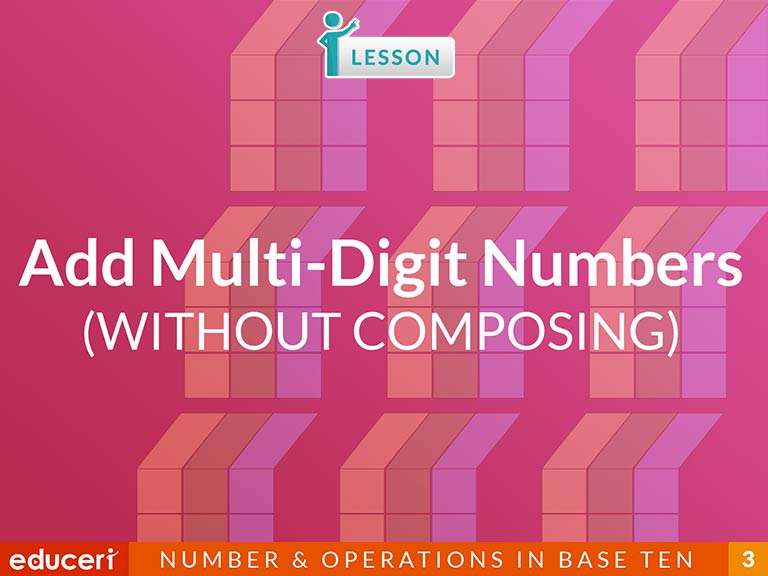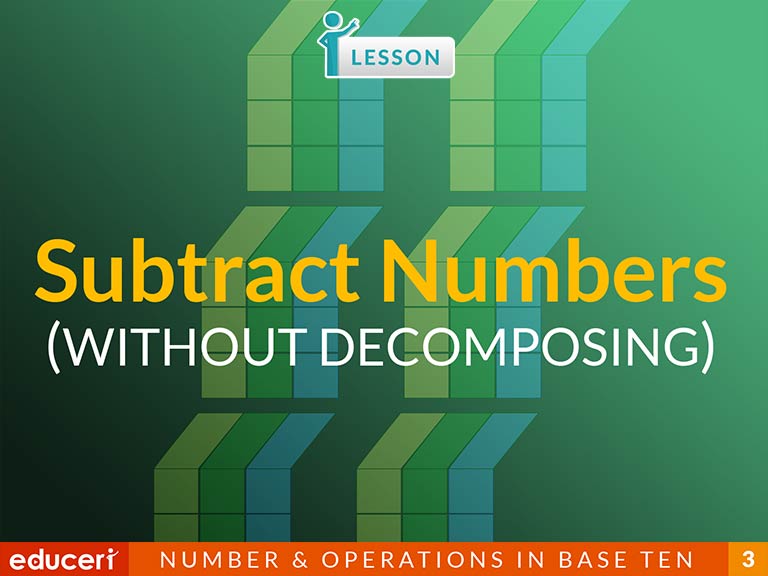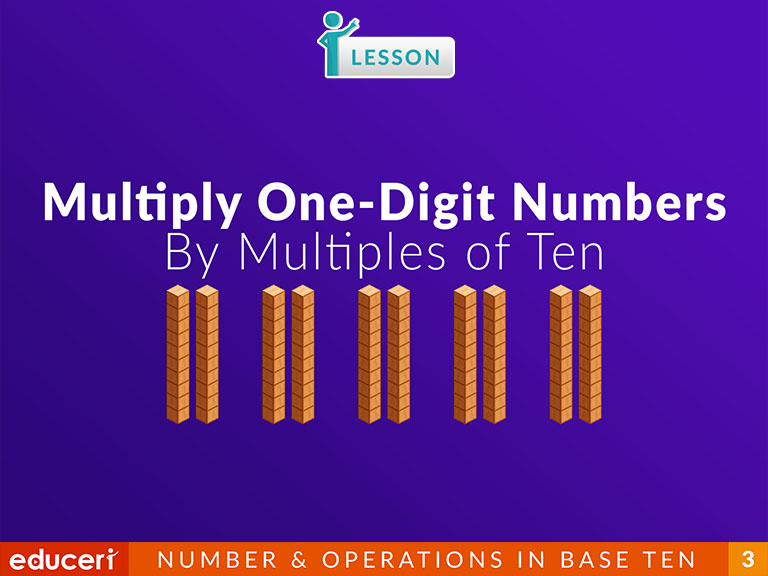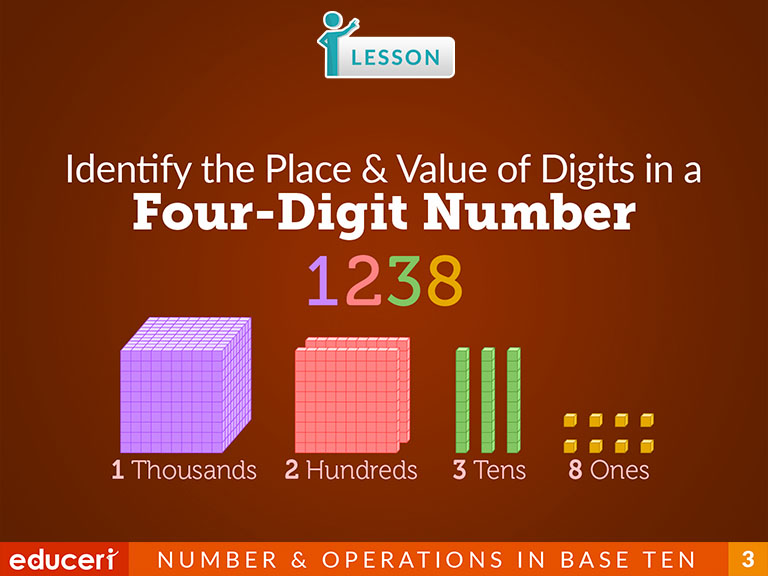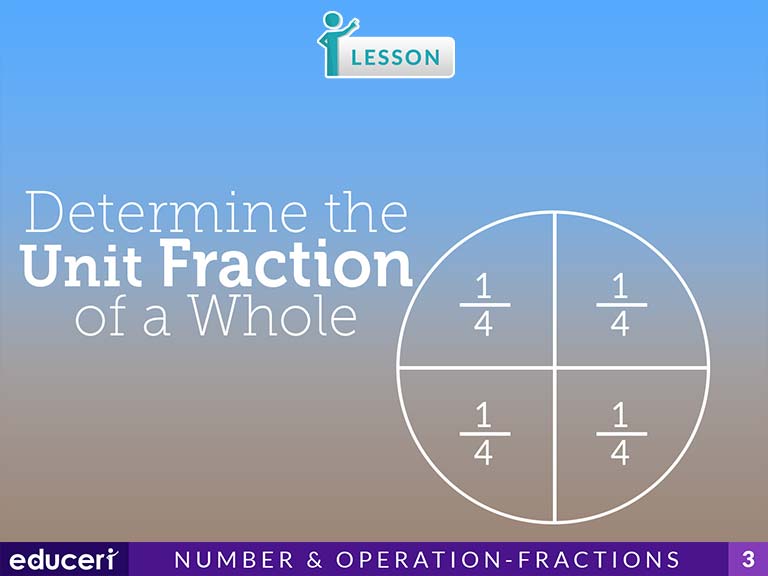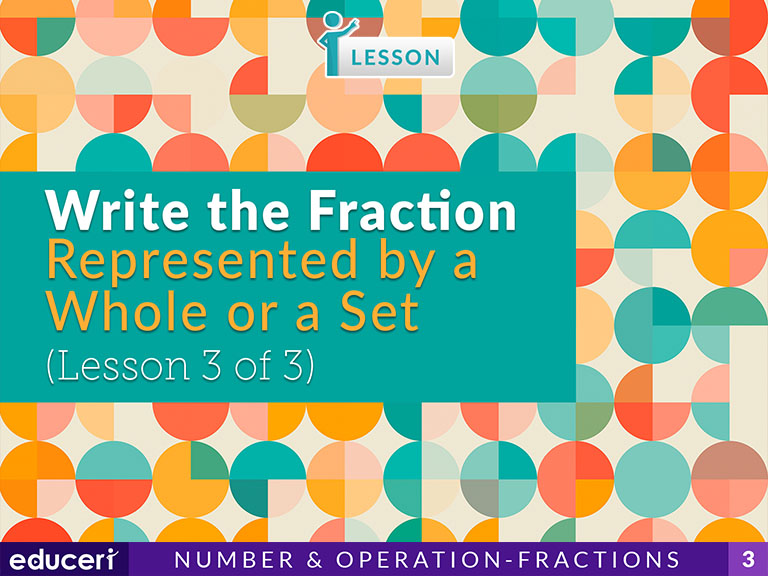All Lessons
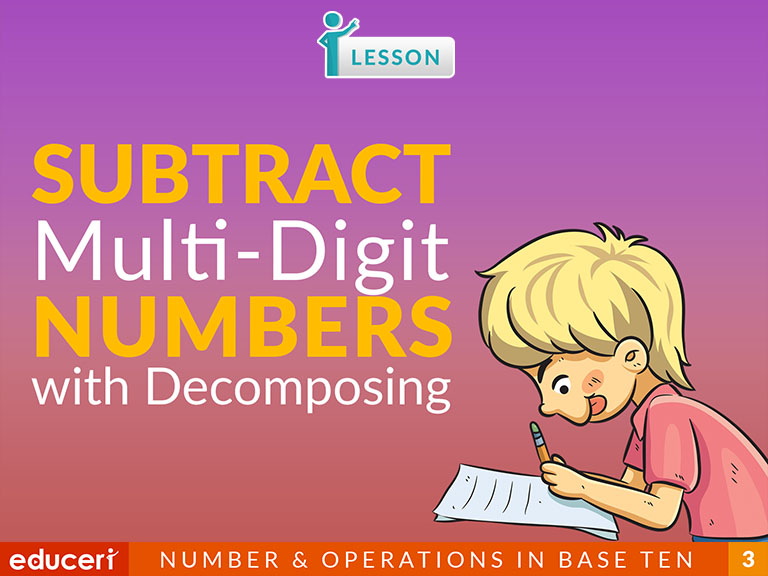
Subtract Multi-Digit Numbers With Decomposing
This lesson covers how to subtract numbers with decomposing. The lesson includes research-based strategies and strategic questions that prepare students for assessments. In this lesson, students will line up the numbers by place value of their digits, subtract the digits in each place value, decompose the number (if needed), and then interpret the difference. In addition to the lesson, there are four pages of Independent Practice with questions modeled after the assessment items.
Share This Lesson

Order Whole Numbers (Thousands Place)
This number sense lesson focuses on ordering whole numbers. The lesson includes research-based strategies and questions that help prepare students for assessments. In this lesson, students read the problem and write the numbers in the place value chart. Then, they compare the digits with the same place value and write the digits in order. In addition to the lesson, there are four pages of Independent Practice and review with questions modeled after current adaptive testing items.
Share This Lesson
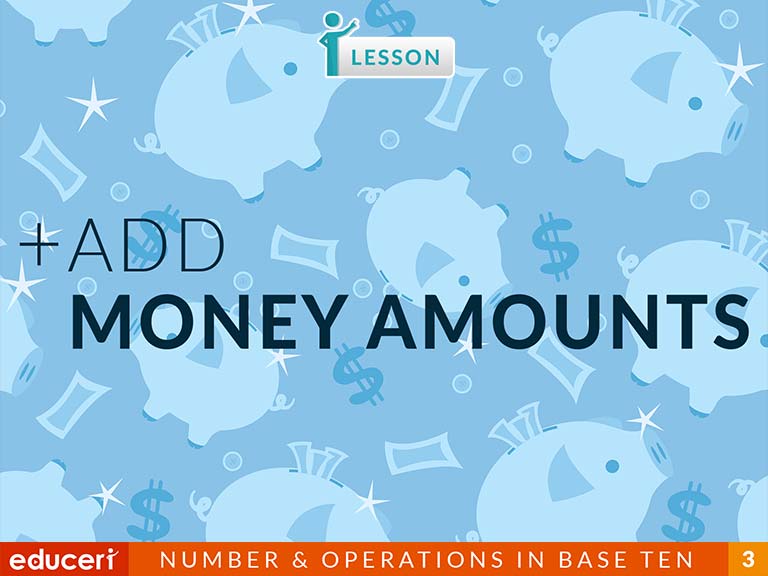
Add Money Amounts
This number sense lesson focuses on adding money amounts. The lesson includes research-based strategies and questions that help prepare students for assessments. In this lesson, students read the problem and set up the addition by lining up the decimals. Then, they find the sum of the money amounts by adding digits in each column (starting from the right) and writing in the decimal point and the dollar sign. In addition to the lesson, there are four pages of Independent Practice and review with questions modeled after current adaptive testing items.
Share This Lesson
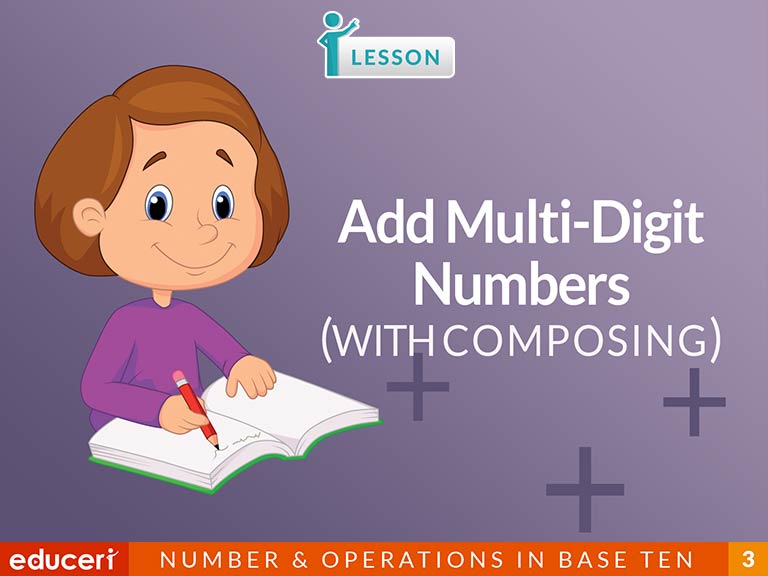
Add Multi-Digit Numbers (with Composing)
This lesson covers how to add numbers with composing. The lesson includes research-based strategies and strategic questions that prepare students for assessments. In this lesson, students will line up the numbers by the place value of their digits, add the digits in each place value, compose the number (if needed), and then interpret the sum. In addition to the lesson, there are four pages of Independent Practice with questions modeled after assessment items.
Share This Lesson
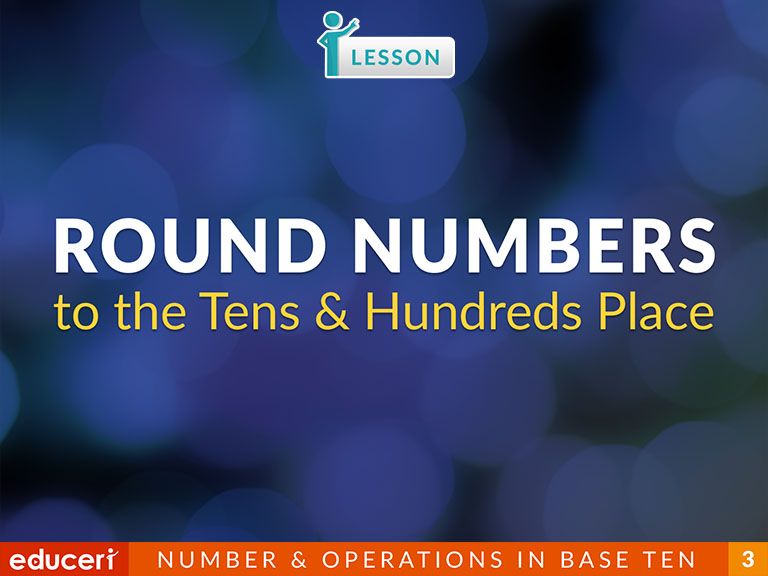
Round Numbers to the Tens and Hundreds Place
This number and operations in base ten lesson teaches students how to round numbers to the nearest 10 and 100. The lesson includes research-based strategies and strategic questions that prepare students for assessments. The focus of this lesson is to look at the two possible rounding values, then decide whether to round down or round up. This lesson uses a variety of strategies including number lines to visualize the number being rounded.
Share This Lesson
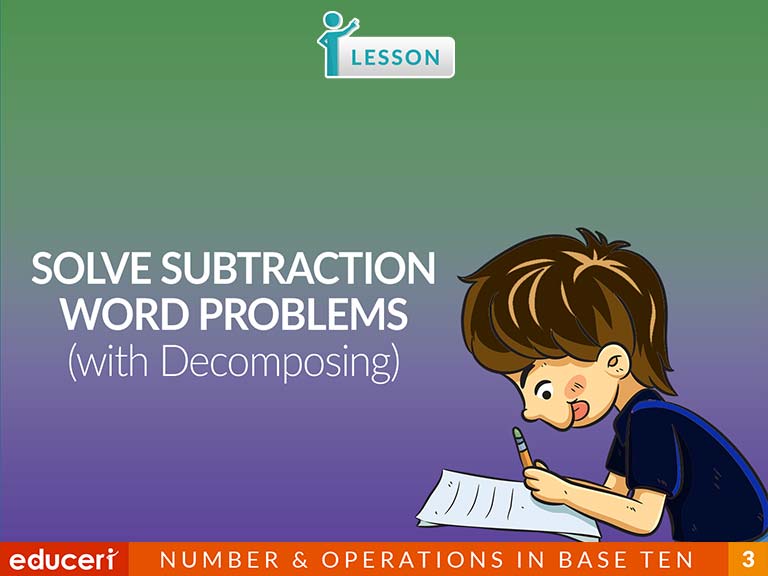
Solve Subtraction Word Problems (With Decomposing)
(Y3) Describe, continue, and create number patterns resulting from performing addition or subtraction (ACMNA060)
ACMNA083(Y4) Find unknown quantities in number sentences involving addition and subtraction and identify equivalent number sentences involving addition and subtraction (ACMNA083)
Share This Lesson
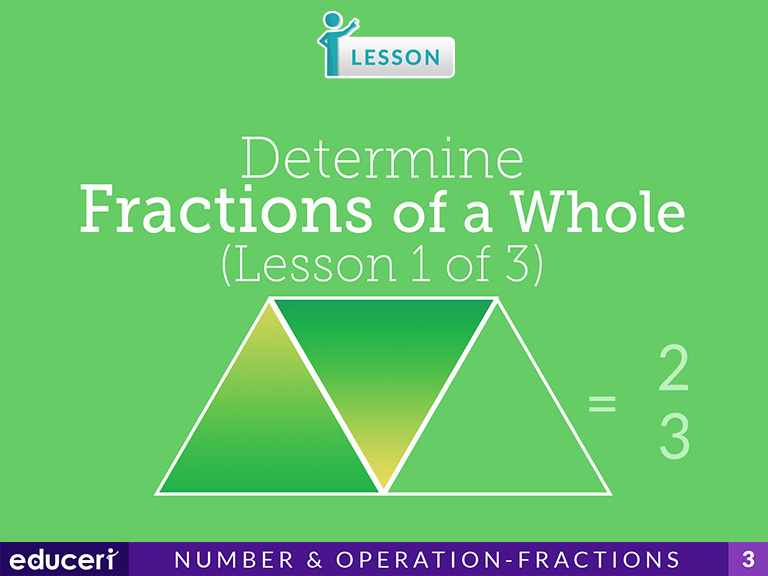
Determine Fractions of a Whole
This numbers and operations − fractions lesson covers how to determine fractions of a whole. The lesson includes research-based strategies and strategic questions that prepare students for assessments. In this lesson, students will read the problem and identify the selected part. Then, they will write the unit fraction of the whole, determine the fraction of the whole by counting selected unit fractions, and interpret the result.
Share This Lesson
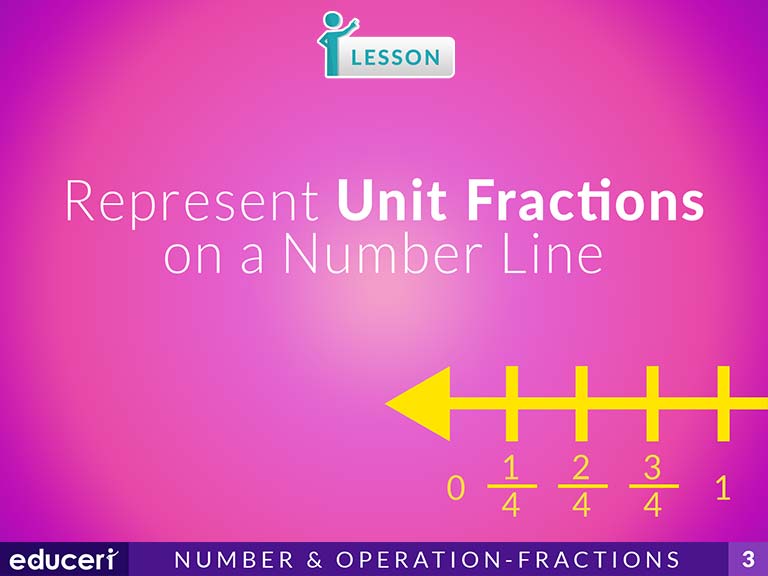
Represent Unit Fractions on a Number Line
This numbers and operations − fractions lesson covers how to represent unit fractions on a number line. The lesson includes research-based strategies and strategic questions that prepare students for assessments. In this lesson, students will read the problem and determine the total number of equal parts using the denominator. Then, they will divide the number line into the total number of equal parts, and represent the unit fraction on the number line.
Share This Lesson
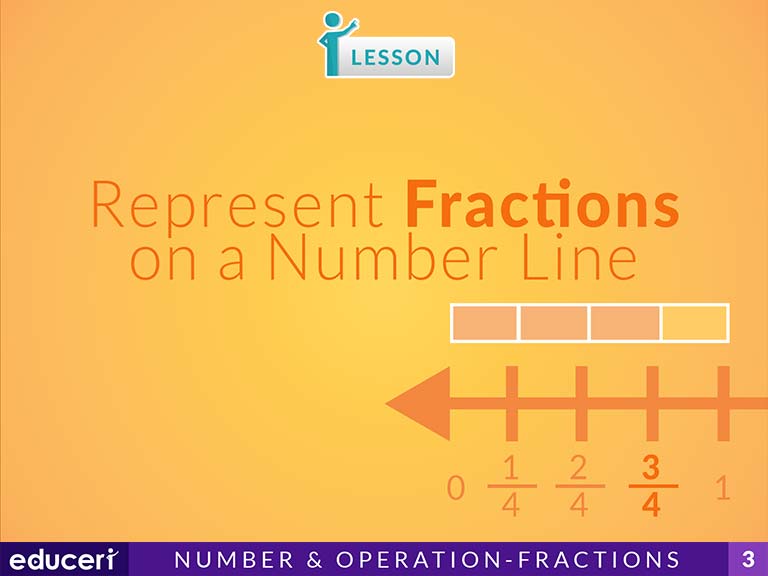
Represent Fractions on a Number Line
This numbers and operations − fractions lesson covers how to represent fractions on a number line. The lesson includes research-based strategies and strategic questions that prepare students for assessments. In this lesson, students will read the problem and determine the total number of equal parts. Then, they will determine which of two number lines to use, determine the number of equal parts from zero using the numerator, and then label the fraction on the number line.
Share This Lesson
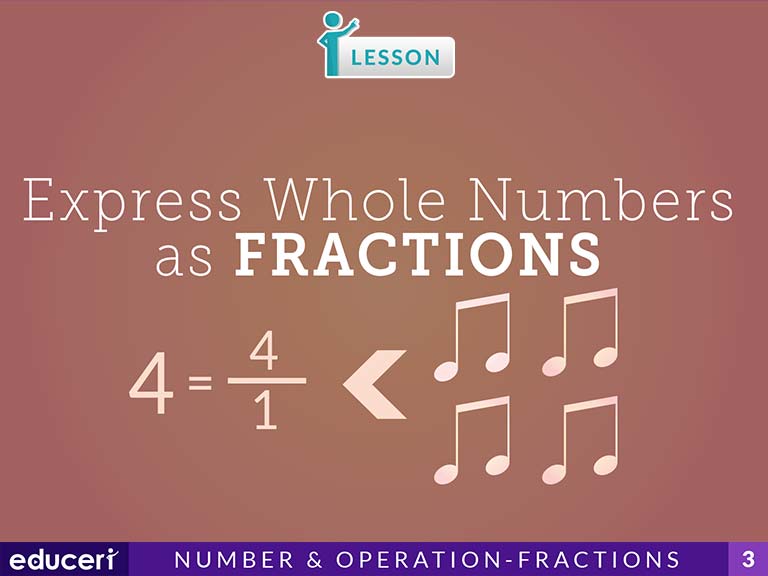
Express Whole Numbers as Fractions
This numbers and operations − fractions lesson covers how to express whole numbers as fractions. The lesson includes research-based strategies and strategic questions that prepare students for assessments. In this lesson, students will count the whole items in a picture, write the whole number, and then express that whole number as a fraction.
Share This Lesson
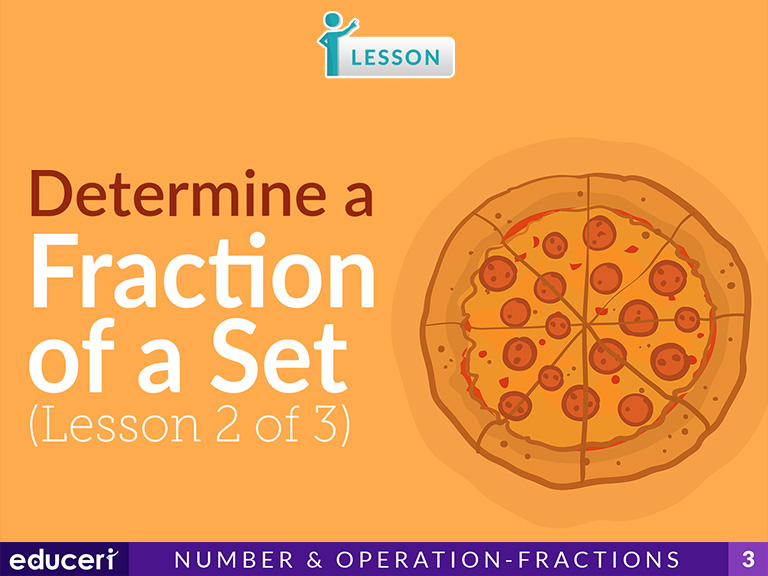
Determine a Fraction of a Set
This number sense lesson focuses on identifying a fraction of a whole. The lesson includes research-based strategies and questions that help prepare students for assessments. In this lesson, students read a problem and determine the number of parts asked for (numerator), and the number of parts that make up the whole (denominator). Then, they read the fraction. In addition to the lesson, there are 11 pages of Independent Practice and review with questions modeled after current adaptive testing items.
